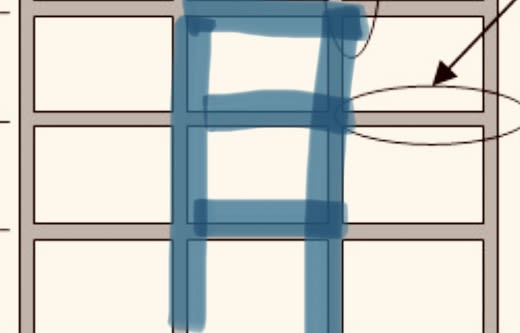LJ_
Structural
- Aug 23, 2020
- 44

I am confused about the property modifiers for the cracked sections under seismic analysis. Could someone shed some light in this matter:
1. I think only the elements part of the seismic resisting system are going to go under in inelastic deformation thus are the ones that crack.
2. Gravity elements, specially gravity beams should remain with uncracked sections and thus the property modifier should be 1. Maybe the columns could crack a little due to diaphragm action but definitely not the gravity beams.
3. However in the perimeter things get confusing. Say you have the frame in the figure, where only the blue moment frame is special, while in the other sections are gravity elements. Would you apply the property modifiers as well to the gravity frames? I am confused here.
Thank you!
